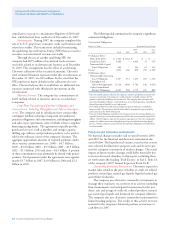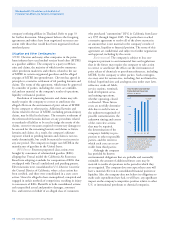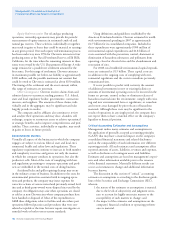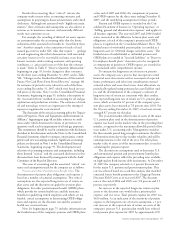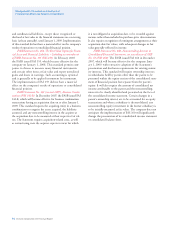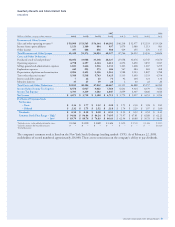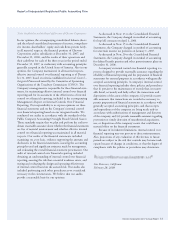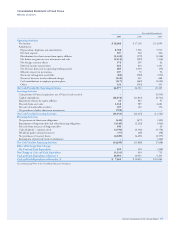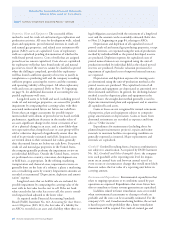Chevron 2007 Annual Report Download - page 52
Download and view the complete annual report
Please find page 52 of the 2007 Chevron annual report below. You can navigate through the pages in the report by either clicking on the pages listed below, or by using the keyword search tool below to find specific information within the annual report.
Management’s Discussion and Analysis of
Financial Condition and Results of Operations
50
and nonfinancial liabilities, except those recognized or
disclosed at fair value in the financial statements on a recurring
basis (at least annually), until January 1, 2009. Implementation
of this standard did not have a material effect on the company’s
results of operations or consolidated financial position.
FASB Statement No. 159, The Fair Value Option for Finan-
cial Assets and Financial Liabilities − Including an amendment
of FASB Statement No. 115 (FAS 159) In February 2007,
the FASB issued FAS 159, which became effective for the
company on January 1, 2008. This standard permits com-
panies to choose to measure many financial instruments
and certain other items at fair value and report unrealized
gains and losses in earnings. Such accounting is optional
and is generally to be applied instrument by instrument.
The implementation of FAS 159 did not have a material
effect on the company’s results of operations or consolidated
financial position.
FASB Statement No. 141 (revised 2007), Business Combi-
nations (FAS 141-R) In December 2007, the FASB issued FAS
141-R, which will become effective for business combination
transactions having an acquisition date on or after January 1,
2009. This standard requires the acquiring entity in a business
combination to recognize the assets acquired, the liabilities
assumed, and any noncontrolling interest in the acquiree at
the acquisition date to be measured at their respective fair val-
ues. The Statement requires acquisition-related costs, as well
as restructuring costs the acquirer expects to incur for which
it is not obligated at acquisition date, to be recorded against
income rather than included in purchase-price determination.
It also requires recognition of contingent arrangements at their
acquisition-date fair values, with subsequent changes in fair
value generally reflected in income.
FASB Statement No. 160, Noncontrolling Interests in
Consolidated Financial Statements, an amendment of ARB
No. 51 (FAS 160) The FASB issued FAS 160 in December
2007, which will become effective for the company Janu-
ary 1, 2009, with retroactive adoption of the Statement’s
presentation and disclosure requirements for existing minor-
ity interests. This standard will require ownership interests
in subsidiaries held by parties other than the parent to be
presented within the equity section of the consolidated state-
ment of financial position but separate from the parent’s
equity. It will also require the amount of consolidated net
income attributable to the parent and the noncontrolling
interest to be clearly identified and presented on the face of
the consolidated income statement. Certain changes in a
parent’s ownership interest are to be accounted for as equity
transactions and when a subsidiary is deconsolidated, any
noncontrolling equity investment in the former subsidiary is
to be initially measured at fair value. The company does not
anticipate the implementation of FAS 160 will significantly
change the presentation of its consolidated income statement
or consolidated balance sheet.




